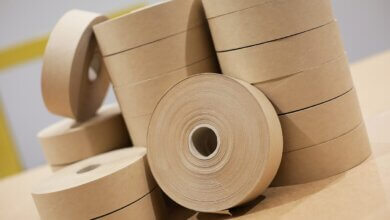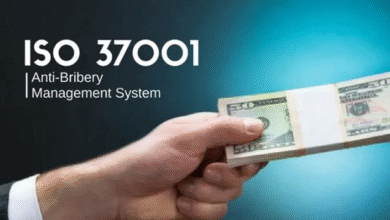The Rising Demand for Ethical High Quality Garments: A Sustainable Future for Fashion

Fashion has always been a reflection of cultural shifts, economic power, and evolving consumer preferences. In today’s world, one of the most transformative changes sweeping through the industry is the growing demand for Ethical high quality garments. Unlike the fast fashion trend that dominated the early 2000s, today’s consumers are more conscious of where their clothes come from, how they’re made, and the impact they have on both people and the planet.
This shift isn’t merely a passing fad; it’s part of a broader movement toward responsible consumption and sustainability. Brands that prioritize fair labor practices, environmentally friendly production, and timeless, durable design are finding themselves at the forefront of this evolution. For consumers, this means making choices that don’t just look good but also do good. Ethical high quality garments are becoming the bridge between style and responsibility.
Why Ethical Fashion Matters More Than Ever
The global fashion industry is one of the largest contributors to pollution and climate change. From textile dyeing that pollutes water sources to synthetic fibers that shed microplastics, the environmental costs are staggering. At the same time, labor exploitation—sweatshops, unsafe working conditions, and unfair wages—remains rampant in many parts of the world.
Ethical fashion addresses these pressing issues. By supporting brands that use organic fabrics, fair trade practices, and transparent supply chains, consumers directly contribute to reducing harm while promoting a healthier global economy. Ethical garments are not only about environmental impact; they are also about valuing human dignity and craftsmanship.
Characteristics of Ethical High Quality Garments
When we talk about “ethical” and “high quality,” it’s important to break down what this really means in the fashion context.
-
Sustainable Materials
Many ethical brands are turning to organic cotton, hemp, bamboo, Tencel, and recycled fibers. These materials reduce reliance on harmful pesticides, synthetic dyes, and petroleum-based fabrics. -
Fair Labor Practices
Ensuring workers are paid fairly, work in safe conditions, and have the right to unionize is at the heart of ethical fashion. This stands in stark contrast to fast fashion’s reliance on cheap labor. -
Transparency
Ethical fashion brands are open about their supply chain, detailing where materials are sourced and how garments are produced. -
Timeless Design and Durability
High quality garments are made to last. Instead of pushing consumers to buy new clothes every season, ethical brands design pieces that can be worn for years. -
Low-Impact Production
Methods like natural dyeing, water recycling, and reduced chemical use ensure minimal environmental harm.
The Growing Consumer Shift Toward Sustainability
Millennials and Gen Z are leading the charge when it comes to demanding responsible fashion. Studies show that these generations are willing to pay more for sustainable clothing, seeing it as an investment in the future rather than a short-term expense. Social media has amplified this trend, with influencers promoting eco-friendly wardrobes and brands showcasing their sustainability reports online.
Interestingly, the pandemic accelerated this shift. As people became more aware of global interconnectedness, the importance of ethical choices—including fashion—became more evident. Many consumers began asking questions like: Who made my clothes? and What impact does this purchase have?
Challenges in Ethical Fashion
While the demand for ethical fashion is rising, the industry faces significant challenges.
-
Higher Costs: Sustainable fabrics and fair wages increase production expenses, which often translates to higher retail prices.
-
Greenwashing: Some brands falsely market themselves as “sustainable” to capitalize on consumer demand without truly committing to ethical practices.
-
Limited Awareness: Many consumers still don’t fully understand the true cost of fast fashion or the benefits of ethical garments.
To overcome these barriers, more education and transparency are needed. Governments and NGOs can play a role by creating standards and certifications that consumers can trust.
How to Identify Genuine Ethical Brands
For consumers interested in making the switch, here are some practical tips:
-
Check Certifications
Look for trusted labels like Fair Trade, GOTS (Global Organic Textile Standard), or B Corp. -
Research the Brand
A genuine ethical brand will be transparent about its practices, suppliers, and production methods. -
Examine Quality
Feel the fabric, check the stitching, and evaluate durability. Ethical high quality garments are built to last. -
Support Local and Small Businesses
Often, smaller brands are more closely connected to their supply chains and have better oversight.
The Future of Ethical Fashion
The fashion industry is undergoing a profound transformation. Ethical fashion is no longer a niche concept; it’s becoming mainstream. Major retailers are investing in sustainable collections, while innovative startups are creating biodegradable fabrics and using advanced technologies like blockchain to ensure supply chain transparency.
The rise of rental fashion, secondhand marketplaces, and clothing swap events also highlights how consumers are rethinking traditional fashion consumption. In the coming decade, ethical high quality garments will likely dominate the industry, driven by consumer demand, environmental necessity, and technological innovation.
Conclusion
The call for ethical fashion is more than a style preference—it’s a social and environmental imperative. As consumers, the power to create change lies in the choices we make. Opting for Ethical high quality garments not only ensures that we wear clothing made with care but also supports a future where fashion respects both people and the planet.
Fashion has always been about self-expression, and today, expressing ourselves ethically means aligning our wardrobes with our values. With more awareness, accessibility, and innovation, ethical fashion isn’t just the future—it’s the present.



